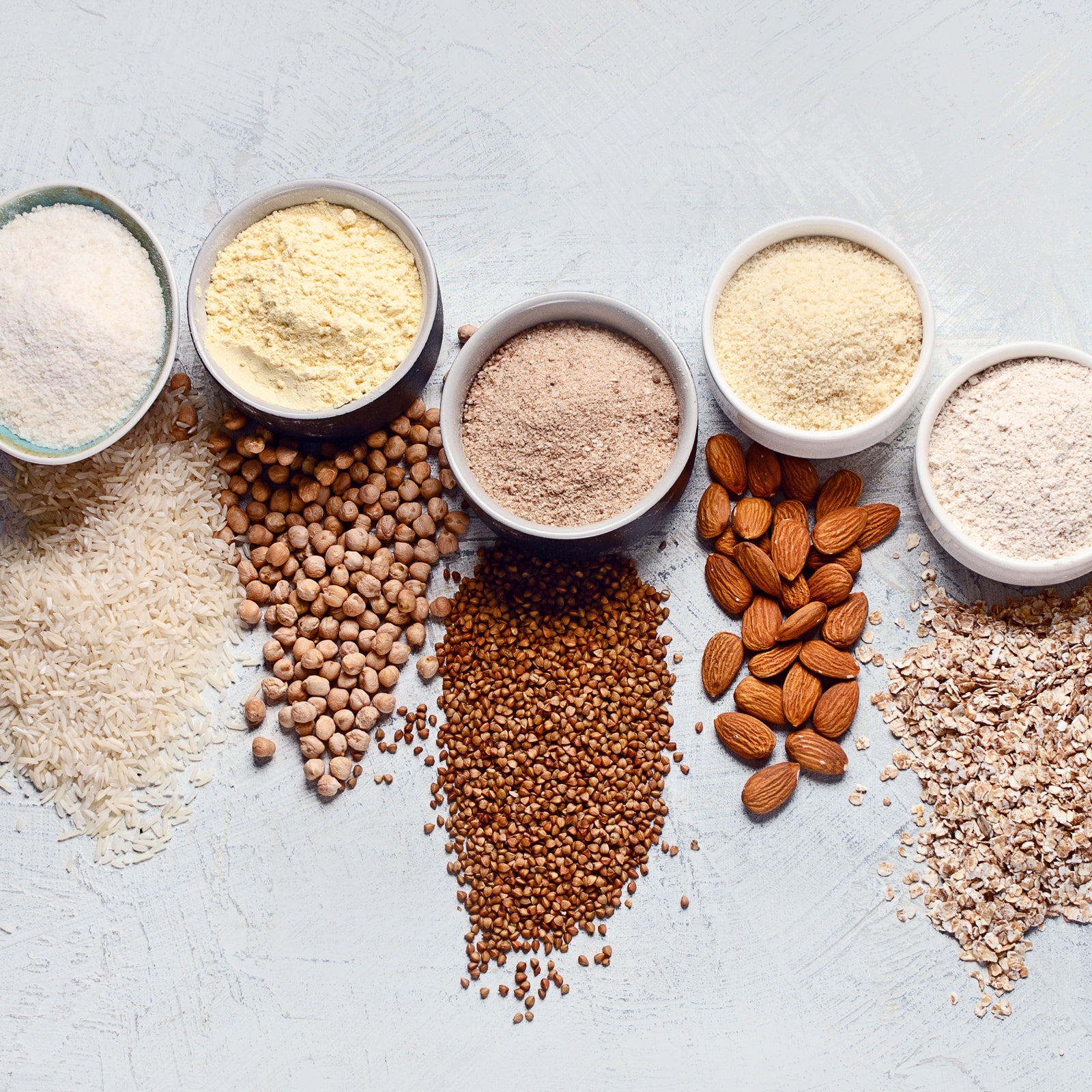The COVID-19 pandemic boosted interest in many domestic pastimes, but baking came out on┬átop. Sourdough starters became a kitchen staple, and close-up shots of homemade banana bread on Instagram. Then there was a┬árun on baking supplies in the springÔÇöwhen┬ástaples┬álike wheat and bread flour sold out, many home┬ácooks┬á┬álike oat and quinoa.
But┬áit can be tricky to stick the landing on your homemade baked goods with┬ásomething like rice or coconut flour. Non-wheat┬áoptions┬áhave different nutritional profiles than wheat flour, and most donÔÇÖt contain gluten. ThatÔÇÖs a great selling point for anyone on a gluten-free diet, but it has a big impact on texture.┬á gives dough its doughiness, helping it stretch and rise, trapping air bubbles, and making the finished product chewy and fluffy. DonÔÇÖt fretÔÇöas long as you know how your choice can affect density, texture, and moisture, you can make great things with alternative flours.
Whether youÔÇÖre looking to experiment because of scarcity, a gluten intolerance, or culinary curiosity, hereÔÇÖs a helpful guide┬áto the alternative┬áflour landscape.
Oat Flour
You can buy oat flour at the store or make it yourself by grinding rolled oats to a fine powder in a food processor or blender.┬á, lead chef at the Institute of Culinary Education in New York City, explains that oat flour┬áabsorbs more liquid than other flours, which┬ámakes for drier, denser baked goods. ItÔÇÖs great in pie crusts or granola bars, but youÔÇÖll need to add a little extra liquid or fat for moisture. If youÔÇÖre making bread, cake, or anything thatÔÇÖs supposed to be fluffy, you canÔÇÖt use only oat flourÔÇöthe batter or dough wonÔÇÖt rise. But┬áif you still want to add┬áflavor and a crumbly texture, try┬ámixing three parts all-purpose flour with one part oat.
┤í╠ř of oat flour has a similar nutritional profile to all-purpose flour. ItÔÇÖs mostly carbsÔÇö22 gramsÔÇöwith four grams of protein and two grams of fat. It also packs in three grams of mostly soluble fiber, which gels up when mixed with liquid, slowing digestion and ┬á(the bad kind).
Almond Flour
While traditional wheat flour is made up of mostly carbs, almond flour is mostly fat: 15 grams of it in a 170-calorie . It has fewer┬ácarbs and more┬áprotein than traditional flour,┬áwith┬ásix grams of each,┬áand itÔÇÖs overall more calorically dense. The high fat content keeps things moist┬ábut can also weigh things down. Prag recommends doctoring your recipes with ingredients that add rise, like eggs or baking soda, as well as add-ins that can help lend some structure, like bananas. Almond flour is flavorful, making it a great option for a dense, or a .
Coconut Flour
Coconut flour has an even stronger taste than almond, so┬áPrag recommends using it in recipes with complementary flavor profiles, like┬á or . While its somewhat high fat contentÔÇöfour grams per servingÔÇömakes┬áfor denser baked goods, itÔÇÖs still mostly carbohyrates. Eighteen┬ágrams of carbs┬álend sweetness and starch, so you can still┬áget a cakey crumb when you bake with coconut flour. Just be ready to experiment with extra leavening agents like┬áeggs, baking soda, or baking powder.┬á┤í╠ř┬áhas four grams of protein, which adds┬áa little bit of chew. One thing to note: all that fat is saturated, which the┬á recommend limiting to no more than 10 percent of your total daily calories. ThatÔÇÖs about 22 grams for people who eat 2,000 calories per day.
Chickpea Flour
Chickpea flour has traditionally been used in Mediterranean cooking to make carb-rich dishes like┬á, a chickpea pancake. These days, people are using it to make all sorts of baked goodsÔÇöincluding a mean┬á. Its┬áhigh starch content helps bind batters and doughs together, unlike crumbly oat or almond┬áflour. With┬á120 calories, one gram of fat, 21 grams of carbs, and five grams of protein, a┬á is nearly identical to all-purpose flour in terms of calories and macronutrients, but it┬áhas the added benefit of five grams of fiber, which is great for digestion and overall health.┬á
Rice Flour
Kimberly Hansan, who wrote about rice flour, explains┬áthat it has always been a staple in Eastern culturesÔÇöit just happens to be booming┬áin Western cooking right now thanks to the rise of gluten-free diets. Rice flour┬áhas almost no fat┬áand just two grams of proteinÔÇöabout half of whatÔÇÖs in all-purpose flour. ItÔÇÖs high in starch, with 24 grams of carbs per┬á, which means it can bind doughs together and create a chewy texture. While rice flour is traditionally used in dense, flat recipes like ┬áor noodles, it also works for baking┬ásince itÔÇÖs almost flavorless and rises easily. Just be sure to use baking powder or soda to help create and trap air bubbles.
Quinoa Flour 
┤í▒˘│┘│ˇ┤ă│▄▓Á│ˇ╠ř has been a key part of South American cuisine for centuries, the idea of grinding it into a flour didnÔÇÖt really take hold until gluten-free diets became popular. It has slightly more fat than all-purpose flourÔÇötwo grams per ÔÇöbut is otherwise similar, with most of its 105 calories coming from carbs. Prag explains that quinoa flour bakes similarly to oat flour, creating a denser, more crumbly texture. You can try mixing all-purpose and quinoa flour in a three-to-one ratio to┬áadd nutty flavor to bread without sacrificing┬áthat squishy, chewy texture. If youÔÇÖre working with just quinoa flour, opt for something like┬á or .╠ř╠ř


